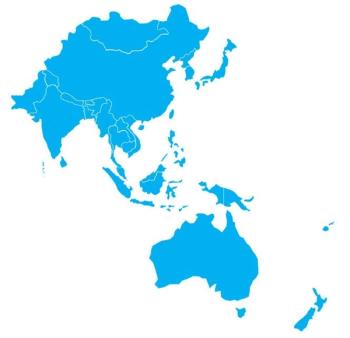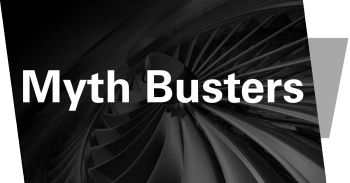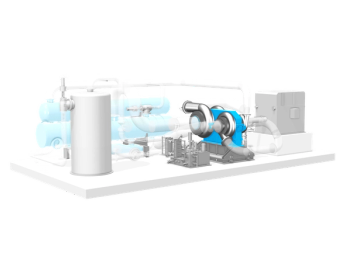
ANALYSIS OF LATERAL ROTOR DYNAMICS
WHAT USERS OF CENTRIFUGAL COMPRESSORS NEED TO KNOW
Llateral rotor dynamic analysis of a rotating machine determines its safe operating limits and assures design integrity in terms of withstanding lateral vibratory forces. Analysis reports are generated by turbomachinery vendors utilizing various commercial software models. However, it can be difficult for the end user to check the validity of the report if they do not possess a similar software program unless the machine is shop tested.
Therefore, it is important that the end user gains an understanding of what a lateral rotor dynamic analysis of a centrifugal compressor should contain, particularly in the oil & gas industry, where failures can have a significant impact on the bottom line.
A centrifugal compressor lateral analysis should have the following as minimum:
A. Rotor model
i. Sketch of the rotor model
ii. Computer model — (Labyrinth, honeycomb, wear ring, bush) sleeves, coupling, and disc (impellers, wheels) locations
iii. Effect of shrink fits
B. Journal bearing data (Most critical turbomachinery uses journal bearings)
i. Bearing type and configuration, length, pad arc length, diameter, minimum and maximum clearance, offset, number of pads, load geometry, preload and pivot type, and geometry
ii. Oil properties and operating conditions (viscosity, flow rate and inlet pressure and inlet operating temperature range up to high-lube, oil-trip temperature)
iii. Dynamic coefficients (plot or table) for minimum and maximum stiffness cases vs. speed
C. Undamped critical speed map and mode shapes
i. Critical speed vs. support stiffness
ii. Curves of the support stiffness (i.e., Kxx and Kyy for minimum and maximum stiffness)
If the bearings lie on nodal points (where shaft deflection is zero) in mode shape plots, it is impossible to increase damping or lower amplification factors if required after shop tests by means of changing the bearing parameters. Hence, such cases must be avoided from the design phase (Figure 1).
D. Damped unbalance response conditions
i. Identification of the frequency of each critical speed in the range from 0 to 1.5x machine normal speed with phase and amplitude (Bode plots) at the vibration probe locations. This should preferably be at intermediate bearing clearance and stiffness
ii. Some vendors simulate unbalance by adding an unbalance weight at the coupling hub. The coupling unbalance mass shall preferably be 180° out of phase with the rotor imbalance to promote higher modal deformation. Such simulation calculations should be provided as part of the unbalance calculation report
iii. Comparison of shop verification test versus predicted response curve (Figure 2)
E. Campbell diagram shall contain the damping of rotor in translatory and conical backward and forward whirl mode
F. Interstage seal data
i. Coefficients (when a level 2 analysis is required) for labyrinth seals and balance piston seal. Note: Honeycomb seals have a distinct advantage over labyrinth seals in terms of stability.
ii. Labyrinth: Teeth on rotor or teeth on stator. For dirty gases, the teeth on rotor configuration may be preferred
iii. Statement of requirement of shunt holes and swirl brakes if found imperative for rotor stability
G. Confirmation that there will be no rotor-stator rub during rotor unbalance or due to temporary rotor bow (a cascaded effect as unbalance)
A table of the close clearance magnitudes and locations and maximum vibration levels verify that above conditions are met (Figure 3). This can be further validated by a hot-restart-response test during 80% of full load or full load string test of the compressor.
H. Stability level 1 Analysis
i. The calculated anticipated cross coupling, Qa, (for each centrifugal impeller), total anticipated cross coupling, Qa, log dec and damped natural frequency at anticipated cross coupling, and Q0/Qa
ii. Kirk Donald and Fulton plots to confirm that the compressor is safe in design
I. Stability level II analysis for centrifugal compressors
i. Description of all assumptions used in the analysis
ii. Description of all dynamic effects included in the analysis
iii. The analysis should cover the effect of shrink fits and material hysteresis.
At the end of report, the OEM should include a summary that confirms compliance with API 617 requirements. The equipment manufacturer should also list all computer codes used in the analysis with a brief description of the type of code, e.g., finite element, CFD, transfer matrix, and so on.
Before accepting the design, always ask for a track record list (number of units operating at near or similar operating parameters).
Check the alarm and trip settings on the compressor data sheets. Alarm should be within 60% of bearing clearance and trip should be 1.20 times the alarm set point.
The bearing span of the rotor, in any case, should not exceed 10 times the midshaft diameter of the rotor. This criterion is based on numerous experiments.
Increasing stiffness shifts the critical speed to the higher side but also increases the vibration amplitude. Damping lowers the amplitude of vibration but cannot lower the critical speed. Hence, damping should not be confused as being the reverse of stiffness.
A high bearing-to-shaft stiffness ratio reduces damping in the system. Bearing stiffness should not be confused with system dynamic stiffness. Use of rub-tolerant, abradable labyrinth seals should also be encouraged.
Sometimes an independent design audit is necessary for a compressor which is at the limit of vendor proven experience or for a particularly difficult or complex application.
That is why a rotor dynamic report should be well formatted and should carry vital information to facilitate third party involvement, if required.
The full version of this paper will be available on the Turbomachinery International blog at www.turbomachinerymag.com/blog.
Author
Mantosh Bhattacharya, Technical Specialist (Rotating Machinery) in Petrofac, an oil & gas EPC company with a worldwide presence. www.petrofac.com
Newsletter
Power your knowledge with the latest in turbine technology, engineering advances, and energy solutions—subscribe to Turbomachinery International today.





